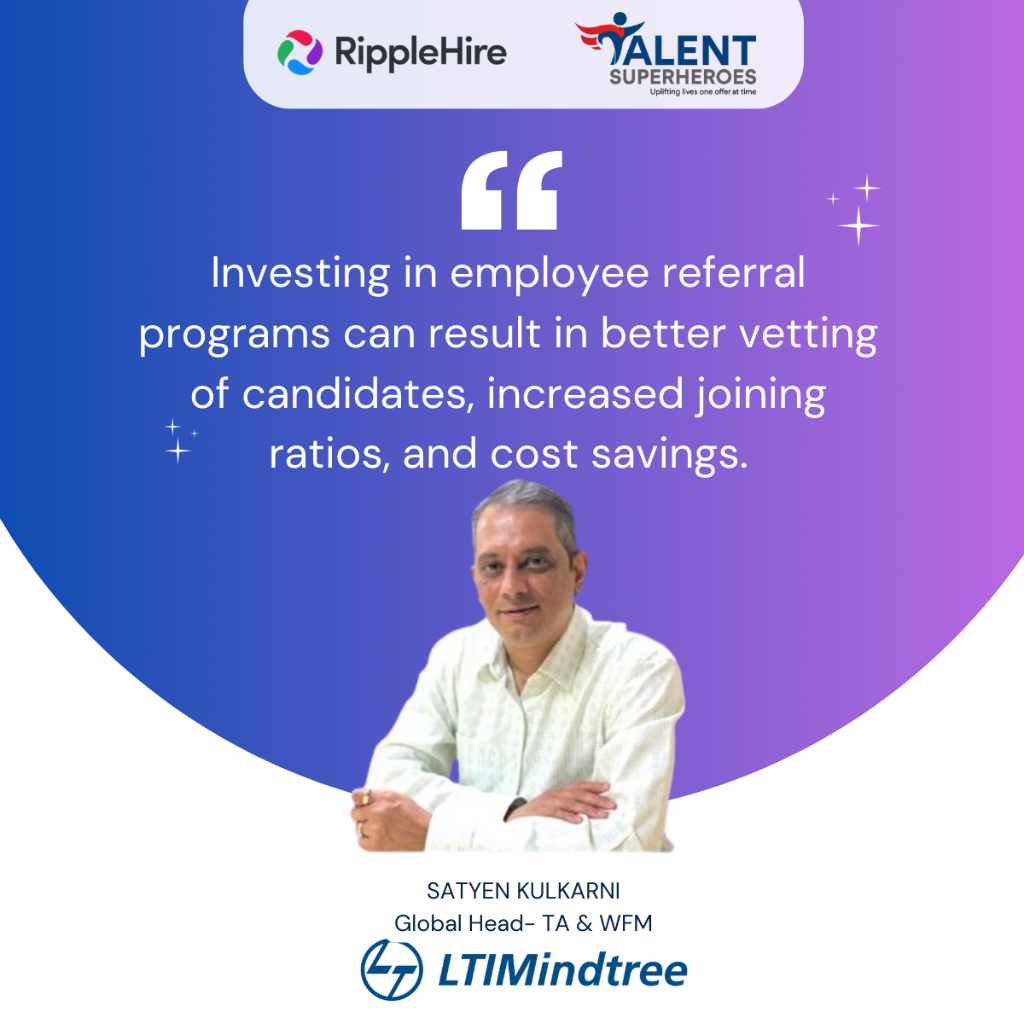In today’s talent acquisition landscape, efficiency is no longer enough. The most successful organizations are considering a talent supply chain management approach, which integrates talent acquisition and resource management functions. This vodcast dives into the advantages of this approach, probes effective resource allocation strategies, and delves into leadership tactics for navigating difficult decisions. You will also get insights on achieving significant hiring success through employee referral programs and managing the talent acquisition process during a merger. This vodcast explores the importance of strong interpersonal bonds within talent acquisition teams.
Mr. Satyen Kulkarni marked his presence on this illuminating episode of this vodcast where he enlightened us and the audience about strategies for Talent Acquisition and Resource Management. Satyen has over 25 years of flourishing experience in the People Supply Chain. He is the Global Head of talent acquisition and workforce management at LTIMindtree. He is a high-performing tech professional recognized for his leadership and positioning in the top 30 talent of 2023 by Forbes India.
How does talent supply chain management (TSC) integrate Talent acquisition and resource management functions, and what are the potential benefits of this approach?
How do you prioritize resource allocation decisions in a resource-constrained environment with competing demands?
Effective leadership in large organizations often involves navigating difficult decisions that may not please everyone. How can leaders balance transparency and tact when communicating such choices?
I think one of the most valued leadership qualities is consistency. People appreciate knowing what to expect from their leader. While making decisions strive to be clear and consistent, even if those decisions aren’t always popular. This consistency helps to build trust and minimizes the perception of bias. I believe that ensuring consistent decision-making is a key responsibility of leadership.
You’ve eliminated the primary job board from your talent acquisition strategy. This is a significant move that many talent acquisition leaders struggle with. Please share your thought process and approach to achieving this.





